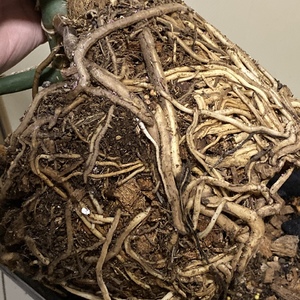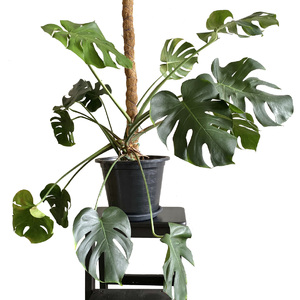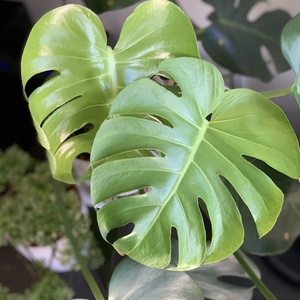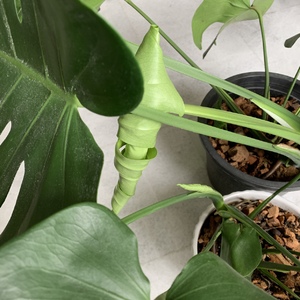植物经验
详细说明
Monstera deliciosa's iconic, split leaves are so pretty that they've been featured extensively in art and design recently, but even more stunning is the plant itself. Also known as a split leaf philodendron, this easy-to-grow houseplant can get huge and live for many years, and it looks great with many different interior styles.
Where to Grow
Monstera deliciosa plants like standard indoor temperatures (68–86 °F), and prefer high humidity and filtered, indirect light. They can be grown outdoors in a shaded location as a climbing, evergreen perennial in US Department of Agriculture zones 10-11. Too much harsh sunlight can result in scorching, but if it doesn't get enough the plant may not develop as many perforations in its leaves.
Care and Planting
Plant in a peaty, well-draining soil in a pot with drainage holes. Monstera deliciosa is a climber in its natural habitat, using its aerial roots to cling to large trees, so you should provide it with moss-covered support sticks or a trellis. If its aerial roots get unruly you can trim them, but it's best to just tuck them back into the pot. They're not the type of roots that damage walls or surfaces. Water when the top quarter-to-third of the soil feels dry to the touch. Standard liquid plant fertilizer can be applied about once a month during the spring and summer growing season. Keep leaves clean and dust-free by washing with a cloth dipped in a solution of a drop of dishwashing detergent in a few cups of water. Though it's not required, the plant also appreciates regular misting of its leaves. When Monstera deliciosa outgrows its current pot (about every two years), transplant to a new pot a few inches larger in diameter and depth than the old one.
Where to Grow
Monstera deliciosa plants like standard indoor temperatures (68–86 °F), and prefer high humidity and filtered, indirect light. They can be grown outdoors in a shaded location as a climbing, evergreen perennial in US Department of Agriculture zones 10-11. Too much harsh sunlight can result in scorching, but if it doesn't get enough the plant may not develop as many perforations in its leaves.
Care and Planting
Plant in a peaty, well-draining soil in a pot with drainage holes. Monstera deliciosa is a climber in its natural habitat, using its aerial roots to cling to large trees, so you should provide it with moss-covered support sticks or a trellis. If its aerial roots get unruly you can trim them, but it's best to just tuck them back into the pot. They're not the type of roots that damage walls or surfaces. Water when the top quarter-to-third of the soil feels dry to the touch. Standard liquid plant fertilizer can be applied about once a month during the spring and summer growing season. Keep leaves clean and dust-free by washing with a cloth dipped in a solution of a drop of dishwashing detergent in a few cups of water. Though it's not required, the plant also appreciates regular misting of its leaves. When Monstera deliciosa outgrows its current pot (about every two years), transplant to a new pot a few inches larger in diameter and depth than the old one.
花相册 (39)








kensong
2019年04月17日

Beautiful new leaf. Can't wait for it to unfurl.


kensong
2019年02月09日

Another couple of new leaves appearing. I pruned off three leaves from this one a few weeks back.


kensong
2019年02月02日

Here comes another new leaf!


kensong
2019年01月17日

It finally unfurled and it's a monster leaf!




kensong
2019年01月12日

Always excited to see a new leaf unfurl.


kensong
2018年12月30日

Another couple of new leaves have opened.


kensong
2018年12月10日

Was away 5 days for a short holiday and came back to this.


kensong
2018年11月07日

More new leaves from different pots.


kensong
2018年10月08日

Baby Monstera emerges.


kensong
2018年09月26日

Monstera has been sprouting new leaves. At this rate its going to be a monster of a plant.











